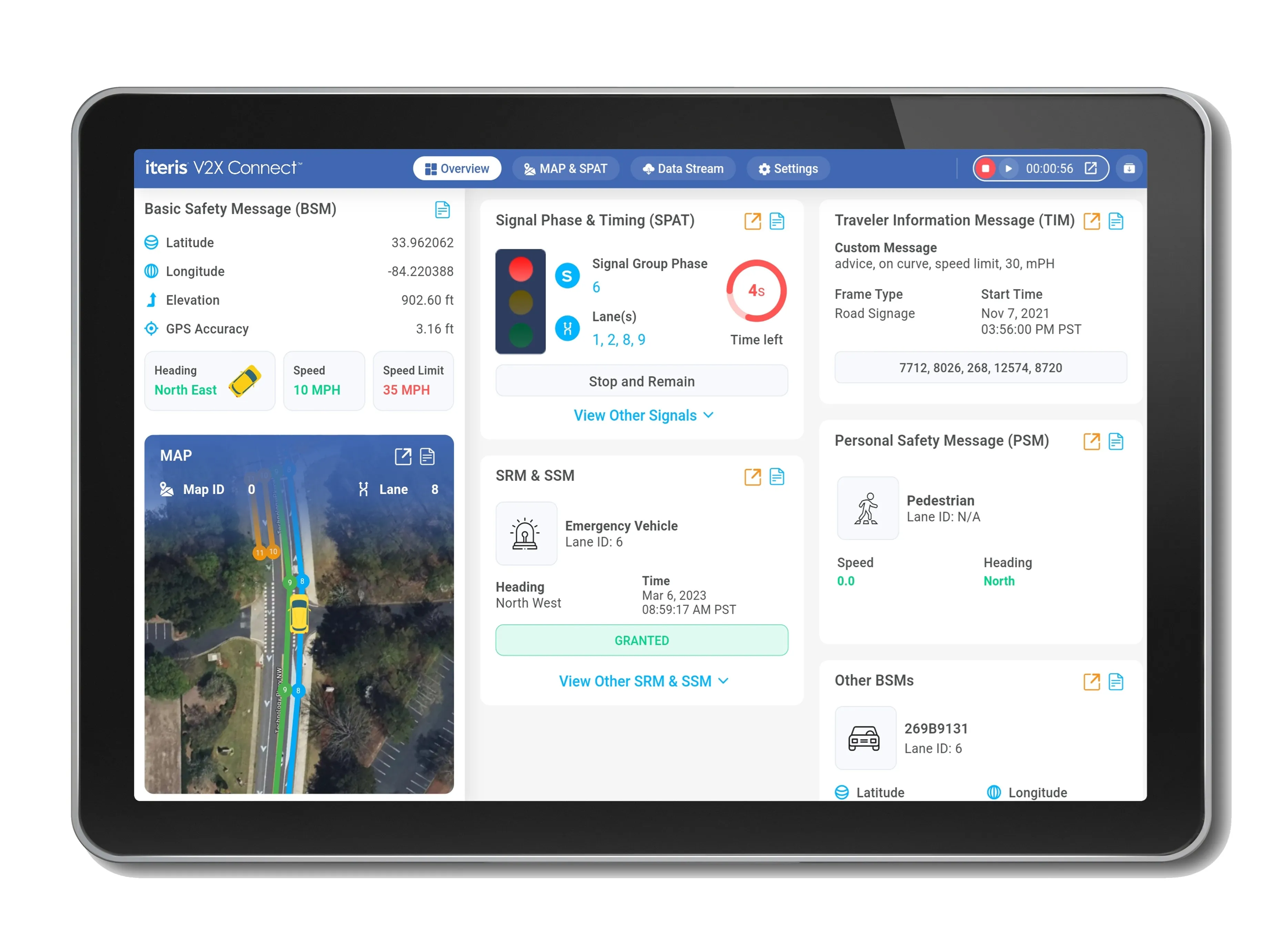
Iteris reports that its V2X Connect software application has been certified by OmniAir Consortium, an industry association promoting interoperability for ITS, tolling and connected vehicles.
V2X Connect tests and verifies that connected vehicle devices are transmitting and receiving secure and reliable messages in the field. The advanced diagnostic tool is used by transportation personnel, system integrators, Iteris distributors and general contractors.
Florida DoT Traffic Engineering Research Laboratory and USDoT Federal Highway Administration currently use V2X Connect in their interoperability initiatives.
Iteris’ new status as an OmniAir official test equipment provider highlights the V2X Connect application’s capability to enhance connected vehicle functions for traffic management agencies across networks. Iteris says V2X Connect can effectively capture and analyse over-the-air network traffic, offering real-time and offline analysis via its mobile application.
OmniAir offers independent, third-party testing and certification using validated test cases, qualified test systems and accredited test laboratories. OmniAir Certified devices conform to industry standards and meet interoperability, performance and security requirements. OmniAir’s membership includes public agencies, private companies, research institutions and independent test laboratories.
“Iteris’ work on the V2X Connect test system sets a new benchmark in the industry,” said Jason Conley, executive director of OmniAir. “This test system can benefit test laboratories, infrastructure owner-operators and the wider industry.”










